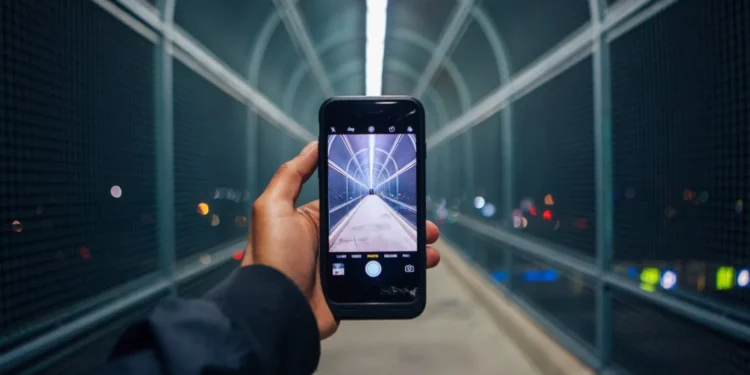Mobile photography has emerged as a powerful art form, transforming how we capture and share the world around us. With smartphones becoming increasingly sophisticated, nearly anyone can create stunning, high-quality images without the need for expensive camera equipment. From spontaneous snapshots to carefully composed works of art, the possibilities with mobile photography are virtually endless.
Yet, while technology has made photography more accessible, capturing truly exceptional images still requires a blend of technique, creativity, and practice. Understanding how to use your smartphone’s camera to its full potential can help you turn everyday moments into extraordinary visuals.
This comprehensive guide compiles over 100 actionable tips designed to elevate your mobile photography skills. Whether you’re a beginner seeking to grasp the basics or an enthusiast ready to explore advanced techniques, this resource will cover everything from composition and lighting to editing and storytelling. By the end of this journey, you’ll not only have a deeper appreciation for mobile photography but also the tools and inspiration to consistently create breathtaking images.
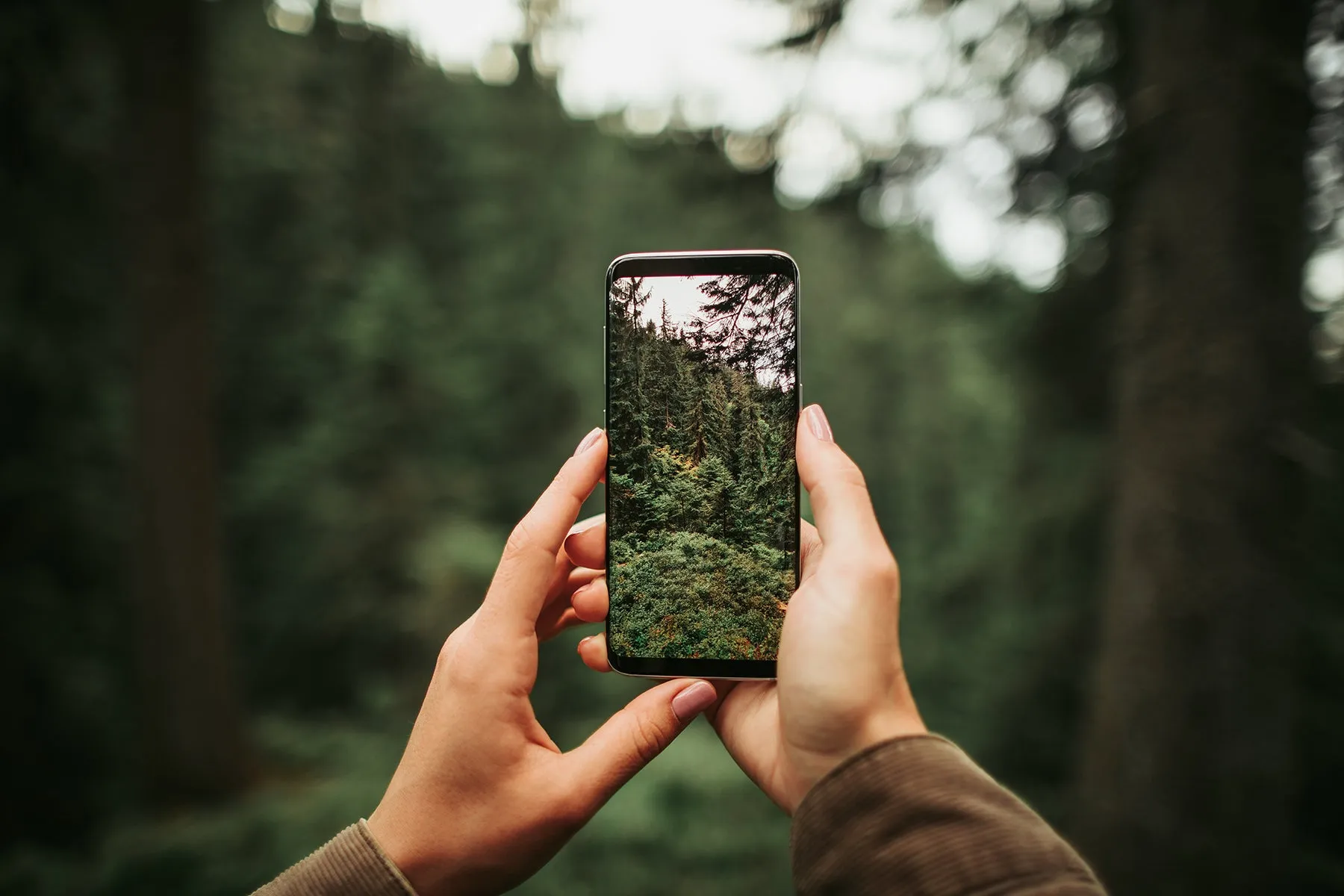
Mastering the Basics
- Know Your Camera Settings
Every smartphone camera is equipped with a set of features that can enhance your photography experience. From adjusting the exposure and ISO to exploring advanced settings like shutter speed and focus, understanding these tools can significantly improve your results. Spend time navigating your camera app and experimenting with manual controls, if available. This not only helps you capture better shots but also builds your confidence in using the device. Remember, knowing your equipment is half the battle in creating professional-quality images. - Keep Your Lens Clean
Over time, fingerprints, dirt, and dust accumulate on your phone’s camera lens, leading to blurry or distorted photos. Before snapping a picture, take a moment to inspect and clean the lens using a soft, lint-free cloth. Avoid using abrasive materials or rough clothing as they can scratch the lens. This simple habit ensures sharp and clear images every time. A clean lens is often the easiest way to make your photos look professional without extra effort. - Use Gridlines for Better Composition
Enabling the gridlines on your smartphone camera divides your screen into nine equal sections. This visual guide helps you apply the “rule of thirds,” a composition principle that enhances visual appeal. Positioning your subject along the lines or at the intersections creates a balanced and engaging photo. Whether you’re shooting landscapes or portraits, this technique makes framing intuitive. By aligning elements purposefully, your photos will stand out with a natural, artistic flow. - Avoid Digital Zoom
Digital zoom crops into your image and reduces resolution, resulting in lower-quality photos. Instead, move closer to your subject or use the highest resolution setting for better results. If getting closer isn’t an option, consider cropping the photo during editing. Many modern smartphones also come with optical zoom capabilities, which preserve image quality—use these features where available. Understanding the limitations of digital zoom helps maintain sharpness and detail in your shots. - Find Good Lighting
Lighting plays a pivotal role in photography, and natural light often yields the best results. Position your subject so that light falls evenly across their face or the scene. Avoid harsh direct sunlight, which can cause unflattering shadows, and experiment with golden hour lighting for a soft, warm glow. If shooting indoors, position yourself near a window or use available artificial light sources strategically. Learning to work with light will elevate your photos dramatically. - Hold Your Phone Steady
Even the slightest hand movement can cause blur in your photos. To ensure sharp images, hold your phone with both hands and brace your elbows against your body for added stability. Alternatively, use a tripod or a phone stabilizer for more controlled shooting. If a tripod isn’t available, resting your phone on a stable surface can also work. Practice your hand posture to make it a natural part of your photography process. - Focus on Your Subject
Modern smartphones allow you to tap the screen to set focus on your subject. This ensures that the intended focal point is sharp and clear. For added creativity, experiment with depth-of-field effects to blur the background and highlight your subject. Take a moment to adjust focus before capturing the shot, especially in low-light settings. This small adjustment can make a big difference in photo quality. - Understand Your Phone’s Capabilities
Not all smartphone cameras are created equal. Take time to explore your phone’s strengths, whether it excels in low light, macro photography, or high-resolution landscapes. Understanding what your device does best allows you to tailor your shooting style accordingly. For example, if your phone has a wide-angle lens, use it to capture dramatic perspectives in architecture or scenery. Play to your phone’s strengths for standout photos. - Experiment with Angles
Changing your perspective can dramatically transform a photo. Don’t just shoot at eye level—try taking photos from high above, ground level, or even unique angles to add interest. Tilting your phone slightly can also create dynamic lines in your composition. Experiment with unusual viewpoints to discover what works best for your subject. A fresh perspective often brings life to an otherwise ordinary scene. - Edit Thoughtfully
Post-processing can enhance your mobile photos, but over-editing can ruin them. Use editing apps like Lightroom, Snapseed, or VSCO to make subtle adjustments to brightness, contrast, and saturation. Avoid excessive filters that can make photos look unnatural. Focus on enhancing the image to align with your artistic vision. A well-edited photo retains its authenticity while standing out visually.
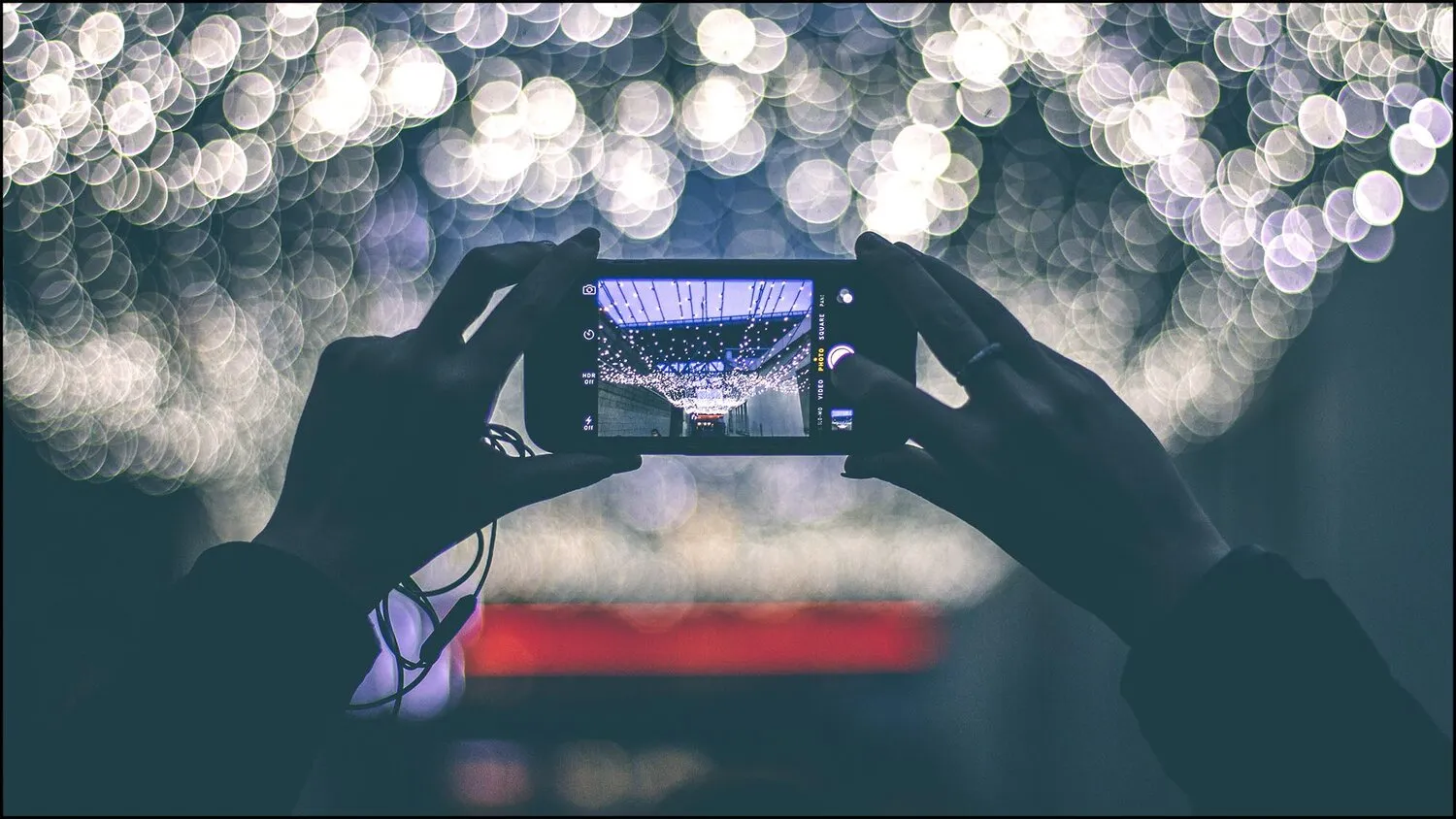
Enhancing Your Photography Skills
- Use HDR Mode for Balanced Shots
High Dynamic Range (HDR) mode combines multiple exposures to create a balanced photo with well-lit highlights and detailed shadows. This feature is particularly useful when shooting landscapes, high-contrast scenes, or backlit subjects. While most smartphones have an auto-HDR setting, manually enabling it allows you to control when it’s applied. Be cautious with moving subjects, as HDR can cause blur due to its multi-frame processing. - Pay Attention to the Background
A cluttered background can distract from your subject and diminish the impact of your photo. Look for clean, minimal, or complementary backgrounds that enhance the overall composition. Consider repositioning yourself or the subject to eliminate distractions. In busy environments, use a shallow depth of field (portrait mode) to blur the background and focus attention on the subject. A mindful approach to background selection can elevate your photos effortlessly. - Use Leading Lines
Leading lines are visual elements like roads, fences, or rivers that guide the viewer’s eye toward the subject of your photo. Incorporating these lines adds depth and structure, making your composition more compelling. Position yourself to use natural or architectural lines creatively, leading the viewer through the frame. Experimenting with leading lines helps your images tell a visual story. - Embrace Negative Space
Negative space refers to the empty or open areas around your subject. This space helps to emphasize the subject and creates a sense of simplicity and elegance. For example, a single tree in an open field or a lone figure against a blank wall uses negative space effectively. This technique is especially powerful in minimalist photography, drawing the viewer’s attention straight to the subject. - Shoot in Burst Mode for Action Shots
Capturing fast-moving subjects like sports, kids, or wildlife can be challenging. Burst mode allows you to take multiple shots in quick succession, increasing the likelihood of getting the perfect frame. Afterward, you can select the sharpest and most dynamic image from the series. Mastering burst mode ensures you never miss a fleeting moment. - Try Macro Photography
Modern smartphones often include a macro mode or lens for capturing intricate details up close. Use this feature to photograph textures, small objects, or nature scenes like flowers and insects. Ensure sufficient lighting and a steady hand for sharp results. A dedicated macro lens attachment can further improve image quality if your phone lacks a built-in macro function. - Use Reflections Creatively
Reflections add a unique perspective to your photos. Look for reflective surfaces like water, glass, or shiny floors to incorporate into your shots. Position your subject to create symmetry or interesting patterns within the reflection. Experiment with angles to achieve the best result, as even small adjustments can change the dynamic of your composition. - Shoot During Golden Hour
The golden hour, shortly after sunrise and before sunset, offers soft, warm, and diffused light that enhances the mood of your photos. Use this time for portraits, landscapes, or street photography to capture stunningly natural results. Plan your shoots around these periods to take advantage of the flattering lighting conditions. - Experiment with Shadows and Silhouettes
Shadows and silhouettes can add drama and creativity to your photos. Position your subject against a bright light source, such as the sun, to create a silhouette effect. Alternatively, use shadows to add layers, patterns, or mystery to your shots. Understanding how light interacts with your subject will help you master these artistic techniques. - Learn About Photo Composition Techniques
Beyond the rule of thirds, explore other composition techniques like symmetry, framing, and the golden spiral. Symmetry can make your photos visually satisfying, while framing uses natural elements like arches or windows to draw focus to the subject. Study these principles to expand your creative toolkit and diversify your approach.
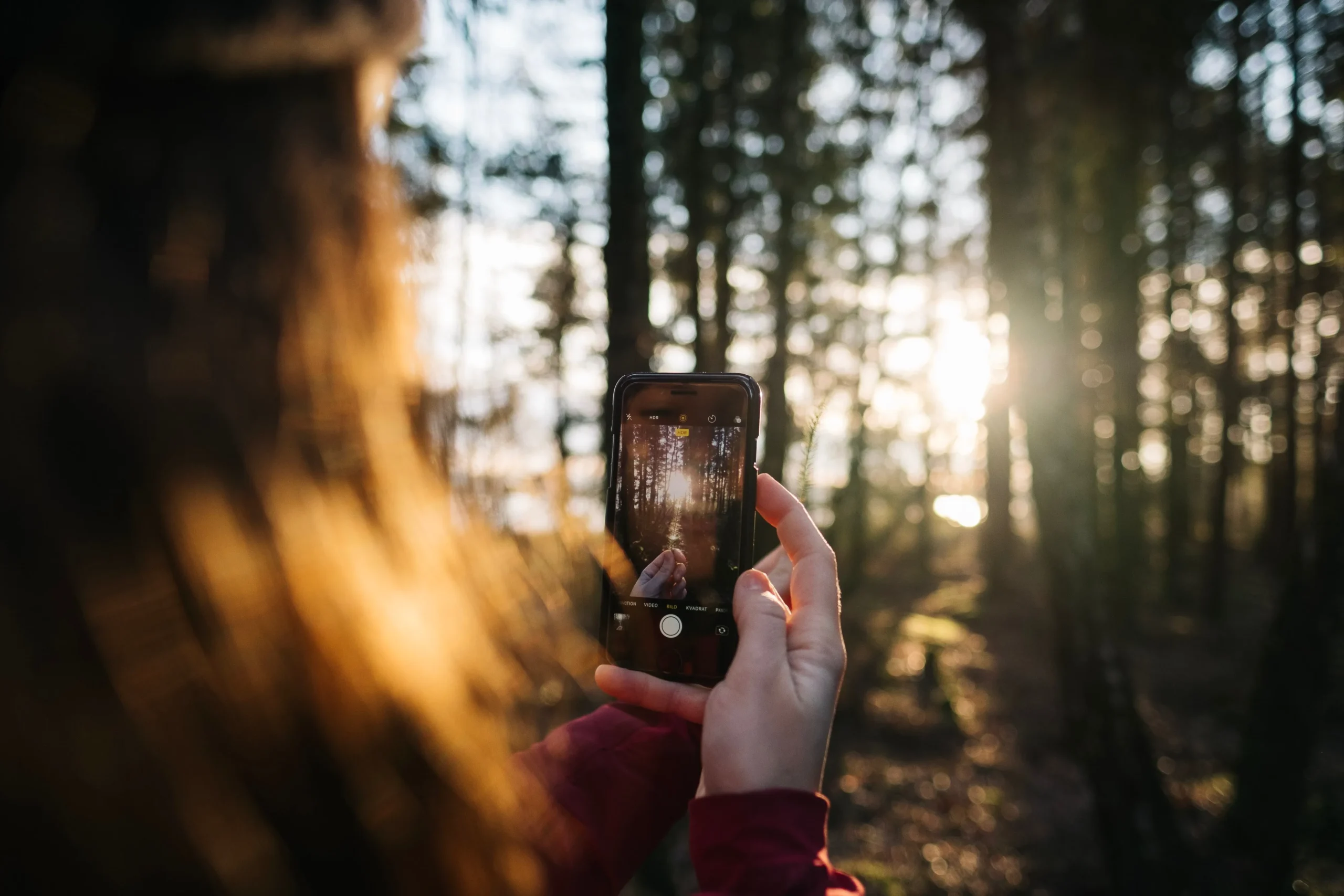
Leveraging Advanced Techniques
- Utilize Portrait Mode for Depth
Portrait mode uses depth-sensing technology to blur the background and emphasize your subject. This creates a professional-looking shallow depth of field effect, similar to DSLR cameras. Adjust the intensity of the blur to suit your style, and ensure good lighting for crisp results. Portrait mode isn’t just for people—try it on objects, pets, or flowers to create stunning visuals. - Shoot in RAW Format
RAW files retain more data than compressed formats like JPEG, providing greater flexibility in post-processing. Many smartphones offer a RAW shooting mode, often found in manual or pro camera settings. RAW files allow you to adjust exposure, color balance, and detail without losing quality. While these files take up more storage, they’re invaluable for serious editing. - Use External Lenses
Clip-on lenses for smartphones, such as fisheye, wide-angle, or telephoto, expand your creative possibilities. These lenses are easy to attach and can transform your phone’s standard camera capabilities. For example, wide-angle lenses are excellent for landscapes, while telephoto lenses help capture distant subjects. Invest in high-quality lenses for the best results. - Practice Low-Light Photography
Low-light photography requires patience and technique to avoid grainy or blurry results. Use night mode, which enhances details and reduces noise in dark environments. Stabilize your phone with a tripod to avoid motion blur, and look for light sources like streetlights or candles to add ambiance. Understanding how your phone performs in low-light situations is crucial for capturing stunning night shots. - Incorporate Foreground Elements
Adding foreground elements, like leaves, fences, or props, adds depth and layers to your photos. These elements help frame the subject and create a sense of immersion. Experiment with focusing on either the foreground or background to highlight different aspects of the scene. Foreground elements often make your composition feel richer and more dynamic. - Use Panoramic Mode Creatively
While panoramic mode is commonly used for sweeping landscapes, it can also be employed for creative compositions. Try panning vertically for tall buildings or capturing dynamic action sequences by moving with the subject. This mode allows you to think outside the box and produce unique photos beyond traditional formats. - Master White Balance Adjustment
White balance affects the color temperature of your photos, ensuring whites appear neutral rather than yellow or blue. Adjust this setting manually in your camera app or editing software to match the lighting conditions. Accurate white balance results in natural-looking colors and enhances the overall tone of your images. - Utilize Shadows for Dramatic Effects
Shadows can be just as important as light in photography. Use them to add intrigue, patterns, or dimension to your shots. For example, capture shadows cast by window blinds or objects to create compelling geometric designs. Experiment with angles and intensities to manipulate the mood of your photos. - Play with Motion Blur
Motion blur adds a sense of movement and dynamism to your photos. Use a slow shutter speed in manual mode to capture motion blur effects, such as light trails from cars or the flow of water. Stabilize your phone on a tripod to prevent unwanted blur and achieve sharp contrasts between static and moving elements. - Capture Candid Moments
Candid shots often convey emotion and authenticity better than posed photos. Keep your phone ready and anticipate moments to capture people in their natural state. Avoid being intrusive and shoot from angles that tell a story. Capturing candid moments can result in more impactful and memorable images.
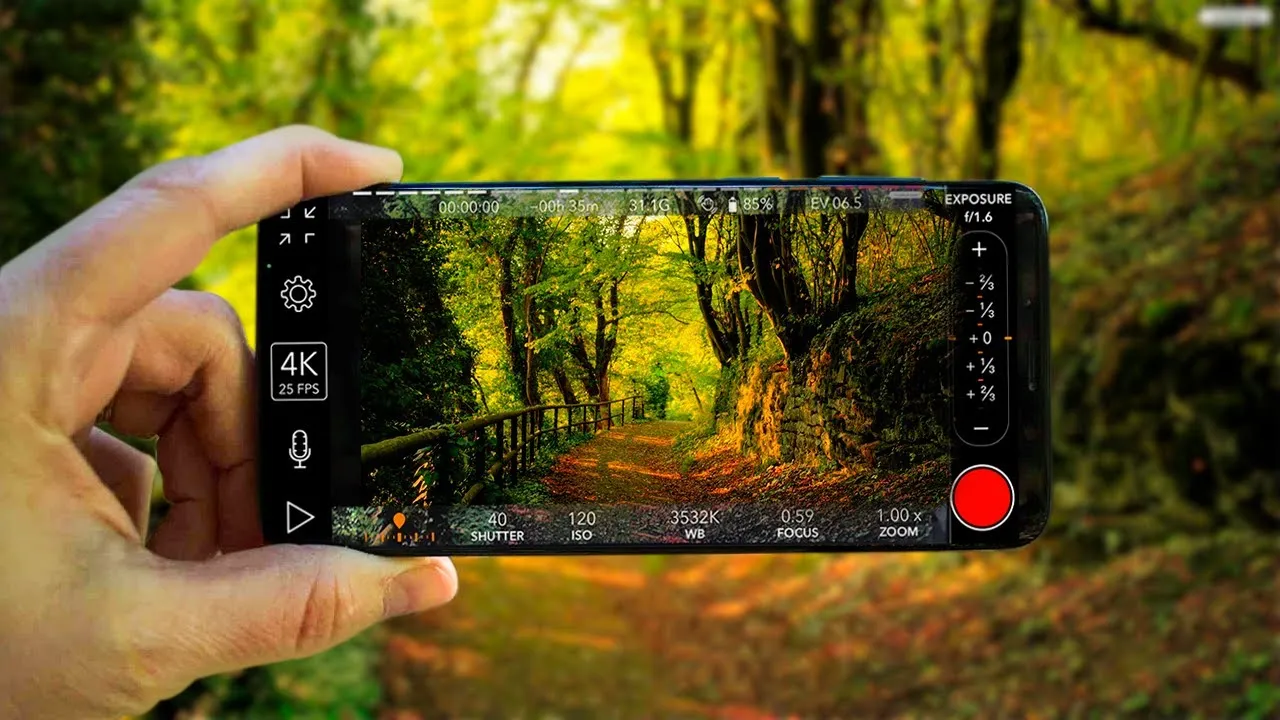
Refining Creative Techniques
- Understand Framing Techniques
Framing involves using elements in your environment, such as windows, doorways, or arches, to naturally frame your subject. This technique draws the viewer’s attention directly to the subject and adds depth to your photo. Experiment with both natural and man-made frames to create unique perspectives and enhance storytelling within your shots. - Use Props to Add Interest
Including props in your photos can elevate a composition and add storytelling elements. For instance, use books, coffee mugs, or flowers to complement portraits, or incorporate umbrellas and mirrors for creative effects. Choose props that align with the theme of your photo and avoid overcrowding the frame. Thoughtful prop placement enhances the visual narrative. - Experiment with Refraction Photography
Refraction involves bending light through transparent objects, like glasses or water droplets, to create fascinating distortions. Try shooting through a crystal ball, water-filled bottle, or raindrops on a window. This technique adds a surreal and artistic quality to your images, turning ordinary scenes into captivating compositions. - Learn the Rule of Odds
The rule of odds suggests that photos with an odd number of subjects (e.g., three flowers or five people) are more visually appealing than even-numbered arrangements. This principle works well for creating balanced and harmonious compositions. Use this technique when photographing groups, objects, or natural elements to make your photos stand out. - Play with High and Low Key Lighting
High-key photography uses bright, even lighting to create cheerful and minimalist compositions, while low-key photography relies on shadows and dark tones for drama and mystery. Experiment with these lighting styles to match the mood and theme of your photos. Understanding high and low key lighting expands your creative range. - Shoot Through Objects
Shooting through objects, like translucent fabrics, leaves, or glasses, adds layers and textures to your photos. This technique softens the image and creates a dreamy effect, often enhancing mood. For example, photographing a person through frosted glass can produce an ethereal, artistic vibe. Adjust focus and positioning to achieve the desired look. - Use Color Theory to Your Advantage
Colors evoke emotions and set the tone of a photograph. Understand basic color theory, including complementary, analogous, and monochromatic schemes, to create striking visuals. For example, pairing red and green creates a vivid contrast, while a blue and purple palette feels calm and harmonious. Thoughtful use of color makes your photos more impactful. - Incorporate Patterns and Textures
Patterns and textures add visual interest and rhythm to your photos. Look for repeating elements like tiles, bricks, or waves, and experiment with their alignment in your frame. Close-up shots of textures, such as tree bark or fabric, can also make compelling abstracts. Capturing these details showcases your attention to nuance. - Explore Light Painting
Light painting is a fun and creative way to use long exposure photography. Use a flashlight, glow sticks, or sparklers to draw or write in the air while the camera captures the motion. Stabilize your phone on a tripod and enable manual mode for extended exposure. This technique allows you to create one-of-a-kind artistic images. - Tell a Story with Your Photo
Every great photo conveys a story or emotion. Think about the narrative behind your composition and how the elements within the frame contribute to it. Include details that evoke curiosity, like a person’s candid expression, or use objects to hint at a bigger story. A storytelling mindset adds depth and purpose to your work.

Developing Your Artistic Vision
- Focus on Eye Contact in Portraits
When capturing portraits, direct eye contact creates a powerful connection between the subject and the viewer. Ask your subject to look into the lens or slightly away for different effects. Eyes often convey emotion, so ensure they are in sharp focus. Use good lighting to highlight the natural sparkle in the eyes for a captivating image. - Use Negative Space for Emotional Impact
Negative space not only enhances composition but can also evoke specific emotions. A lone subject surrounded by vast empty space can communicate isolation or freedom, depending on the context. Experiment with how much empty space you include to influence the mood of your photo. This technique works exceptionally well in minimalist photography. - Photograph Silhouettes with Strong Backlighting
Silhouettes are created by positioning your subject against a strong light source, such as a sunset or bright window. Reduce exposure to darken the subject, creating a dramatic outline. This technique works well for storytelling and adds mystery or drama to your photos. Ensure the background is uncluttered to emphasize the silhouette. - Use Symmetry for Balance
Symmetry in photography creates a sense of harmony and order. Look for symmetrical subjects like buildings, reflections, or patterns that divide the frame evenly. Perfect symmetry can feel satisfying, while slightly off-center compositions can add intrigue. Practicing symmetry enhances your ability to recognize balanced visual elements in the environment. - Explore Black and White Photography
Removing color from an image forces attention on texture, contrast, and composition. Black-and-white photography is excellent for creating timeless, moody, or dramatic photos. Most smartphones allow you to shoot in monochrome or convert color images during editing. Experiment with light and shadow to create striking black-and-white compositions. - Frame Subjects with Natural Elements
Incorporating natural elements like tree branches, cave openings, or arching vines into your composition creates organic frames for your subject. This technique directs focus and adds depth. Align these elements thoughtfully to avoid overwhelming the subject. Nature-based frames are especially effective in landscape and wildlife photography. - Experiment with Abstract Photography
Abstract photography focuses on shapes, patterns, and textures rather than literal representation. Look for unusual perspectives, close-ups, or reflections to create abstract art. Play with color and geometry to challenge the viewer’s perception. Abstracts often encourage creative thinking and help you see everyday objects in new ways. - Play with Scale and Proportions
Highlighting the relative size of subjects can add humor or drama to your photos. For example, position a person to appear tiny next to a large structure, or use forced perspective to create amusing illusions. Understanding how to manipulate scale helps you create compelling visual narratives. - Use Shadows for Layering
Shadows can serve as subjects themselves, adding an additional layer to your photo. Capture long shadows during golden hour or play with intricate patterns created by windowpanes or foliage. Shadows add dimension and intrigue, giving your photos a sense of depth and complexity. - Combine Motion and Stillness
Juxtaposing moving and stationary elements creates dynamic photos. For example, capture a person standing still while others move around them, or freeze water droplets against a flowing stream. Use manual mode to adjust the shutter speed and stabilize your phone for clear contrasts. This contrast between motion and stillness adds energy to your images.
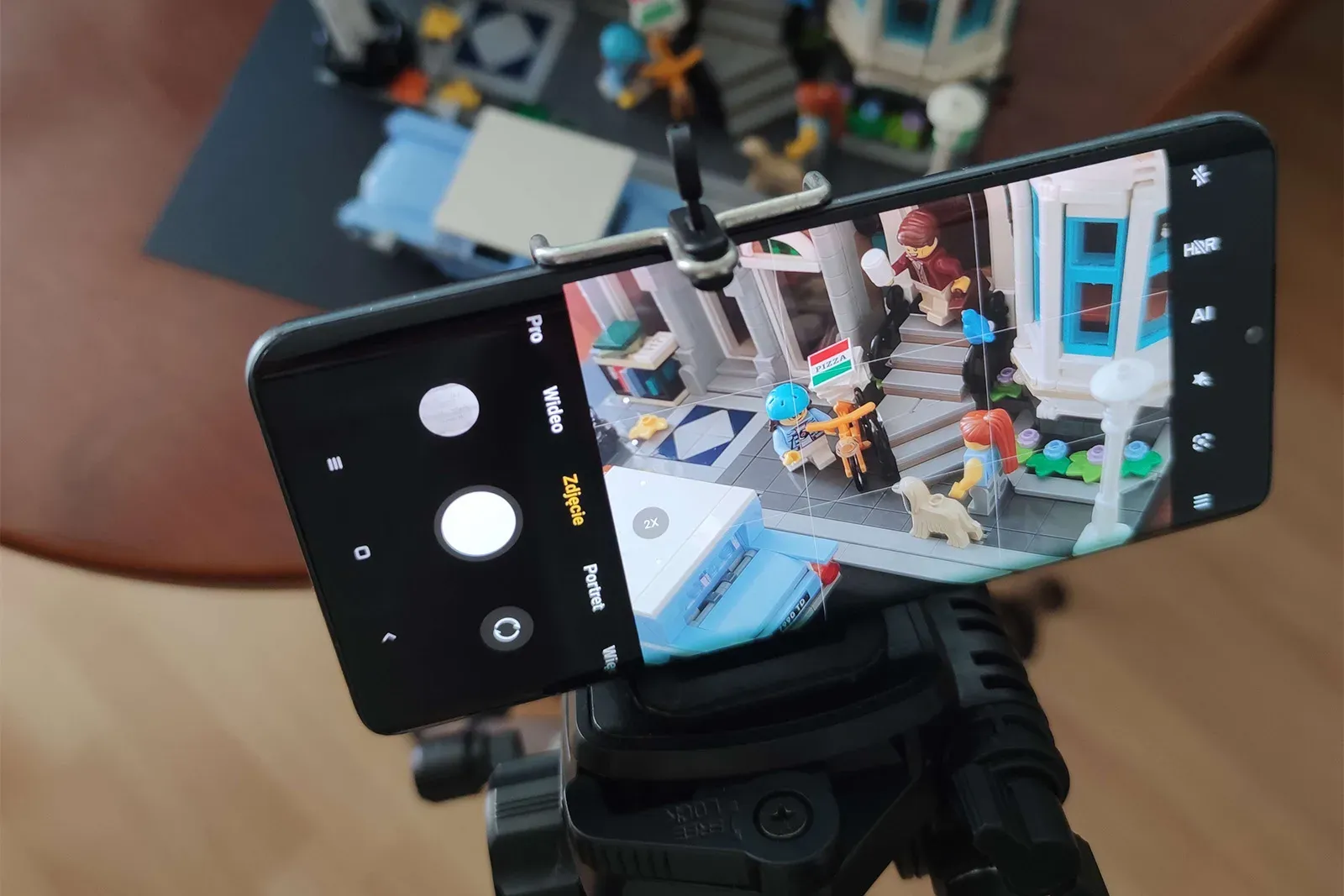
Fine-Tuning Your Mobile Photography Skills
- Use a Tripod for Stability
A tripod ensures your phone stays steady, eliminating blurriness caused by hand movement. It’s especially useful for long exposures, time-lapses, or capturing low-light scenes. Many compact tripods are designed specifically for smartphones, making them portable and easy to use. A tripod also frees your hands for creative experimentation. - Understand Golden Hour vs. Blue Hour
While golden hour offers warm, diffused light, blue hour—just after sunset or before sunrise—provides cool, soft tones. Blue hour is excellent for capturing cityscapes, landscapes, or moody portraits. Knowing when to shoot during these periods can dramatically enhance the atmosphere and emotional impact of your photos. - Capture Reflections in Puddles and Windows
Reflections can double your image’s impact by adding symmetry or abstract elements. Use puddles after rain or reflective glass surfaces creatively. Position your camera close to the reflective surface for a mirror-like effect, or introduce distortions for an artistic twist. Reflections can add depth and intrigue to ordinary scenes. - Use Minimalism for Simplicity
Minimalist photography focuses on simplicity, often with a single subject and ample negative space. Look for clean lines, bold colors, or isolated objects to create minimalist compositions. This style is highly effective for conveying emotion and drawing attention to the subject. A less-is-more approach often creates more striking photos. - Work with Shadows to Create Silhouettes
Shadows aren’t just for adding depth—they can also define your subject. Position your subject so that the light source creates a long shadow, or use partial light to emphasize shapes. Playing with shadow placement adds mystery, drama, or whimsy to your composition, offering a creative spin to mundane scenes. - Try Food Photography Hacks
When photographing food, use natural light near a window and shoot from angles that showcase texture and details, like overhead or side views. Adding props like utensils or colorful napkins can complement the dish and make it look more appetizing. Editing apps can help adjust brightness and contrast to highlight colors. - Use Leading Colors for Visual Flow
Colors can guide the viewer’s eye across your photo. For instance, a red subject against a blue background immediately grabs attention. Use bright, bold, or complementary colors to enhance your subject and create visual flow. Pair this with strong composition for impactful results. - Photograph Motion with Freeze or Blur Effects
Capturing motion adds energy and dynamism to your photos. Use fast shutter speeds to freeze action, like a splash of water or a jumping subject. Conversely, slow shutter speeds create intentional blur, perfect for capturing the flow of waterfalls, car light trails, or people in movement. Experiment to find the right balance. - Understand Exposure Triangle Basics
The exposure triangle consists of ISO, shutter speed, and aperture (if supported by your phone). ISO adjusts brightness but can add noise; shutter speed controls motion blur; and aperture affects depth of field. Learning how these elements interact allows for greater control over your shots, especially in manual mode. - Create Depth with Layering
Layering adds depth by including multiple elements at different distances in the frame. For example, capture a person in the foreground, a tree in the midground, and mountains in the background. This technique enhances the sense of scale and immerses the viewer in your composition. Practice aligning these layers harmoniously.
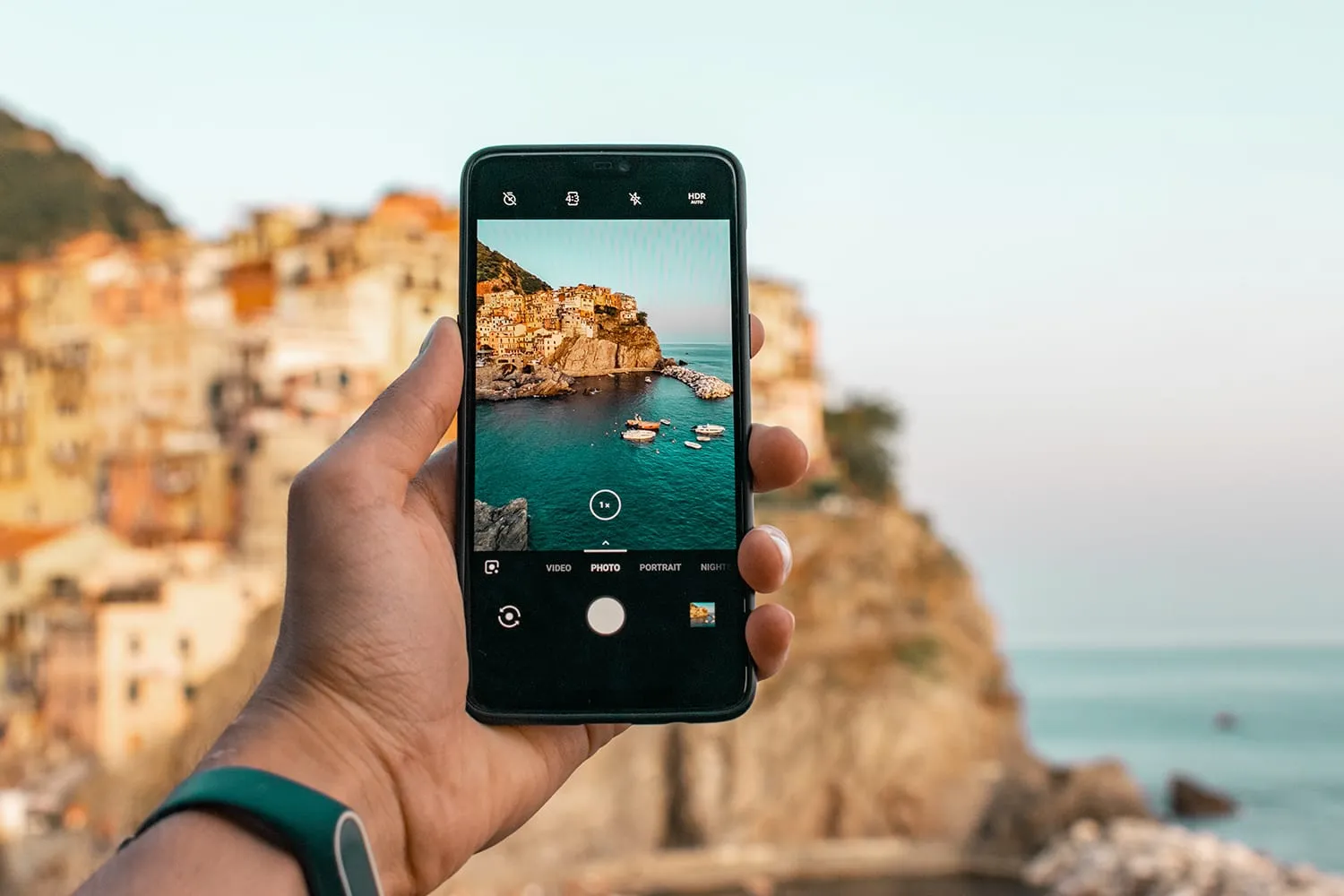
Expanding Your Photography Toolbox
- Experiment with Time-Lapse Photography
Time-lapse photography compresses long sequences into short videos, making it perfect for capturing sunsets, bustling streets, or cloud movements. Many smartphones include a time-lapse mode—set your phone on a tripod for stability and frame your subject thoughtfully. Adjust playback speed during editing to emphasize specific motions. - Explore Hyperlapse for Dynamic Videos
Hyperlapse is a form of time-lapse where the camera moves during recording, creating dynamic footage. Use this technique to follow subjects, walk through scenic landscapes, or capture urban environments. Many smartphones and apps support hyperlapse recording. Stabilize your phone or use gimbals for smooth results. - Use Overhead Shots for Flat Lays
Flat lays are popular in product, food, and lifestyle photography. Arrange your subjects on a flat surface and shoot directly from above for a clean, organized look. Natural light works best, and consider using a consistent color scheme to maintain harmony. Balance negative space and props for professional results. - Understand Histogram Basics
The histogram is a visual graph showing your photo’s tonal range, from shadows (left) to highlights (right). Use it to identify overexposed (too bright) or underexposed (too dark) areas. Learning to interpret and adjust based on the histogram ensures your photos are well-balanced and properly lit. - Incorporate Bold Colors for Impact
Vibrant colors instantly attract attention and can convey emotion. Look for bright subjects or backgrounds that contrast or complement each other, like a red umbrella against a green field. Enhance colors subtly during editing for a natural yet striking result. Bold color choices can elevate even the simplest compositions. - Shoot Urban Photography at Night
Cityscapes and urban environments come alive at night, offering opportunities for neon signs, reflections, and light trails. Use night mode or manual settings for long exposures, and stabilize your phone to avoid blur. Pay attention to framing and leading lines to guide the viewer’s eye through the scene. - Photograph Water with Long Exposure
Long exposure photography captures the smooth flow of water, like rivers, waterfalls, or ocean waves. Stabilize your phone with a tripod and use a slow shutter speed in manual mode. Adjust exposure to balance brightness and highlight water motion for a serene, ethereal effect. - Focus on Small Details
Sometimes, it’s the tiny details that make a photo compelling. Capture close-ups of textures, patterns, or small objects like jewelry, leaves, or raindrops. Use macro mode or attach a macro lens for sharpness. Paying attention to details adds variety to your portfolio and sharpens your observational skills. - Explore Forced Perspective
Forced perspective creates optical illusions by manipulating the relative size and position of subjects. For example, make someone appear to “hold” a distant object or interact with large structures. Experiment with angles, distances, and scale to perfect this fun and creative technique. - Use Bokeh for Artistic Backgrounds
Bokeh refers to the pleasing blur effect in the out-of-focus areas of a photo. It works particularly well in portrait or close-up photography. Use portrait mode or adjust aperture settings (if available) to achieve this effect. Light sources like fairy lights or candles create beautiful bokeh patterns, adding a dreamy quality to your shots.
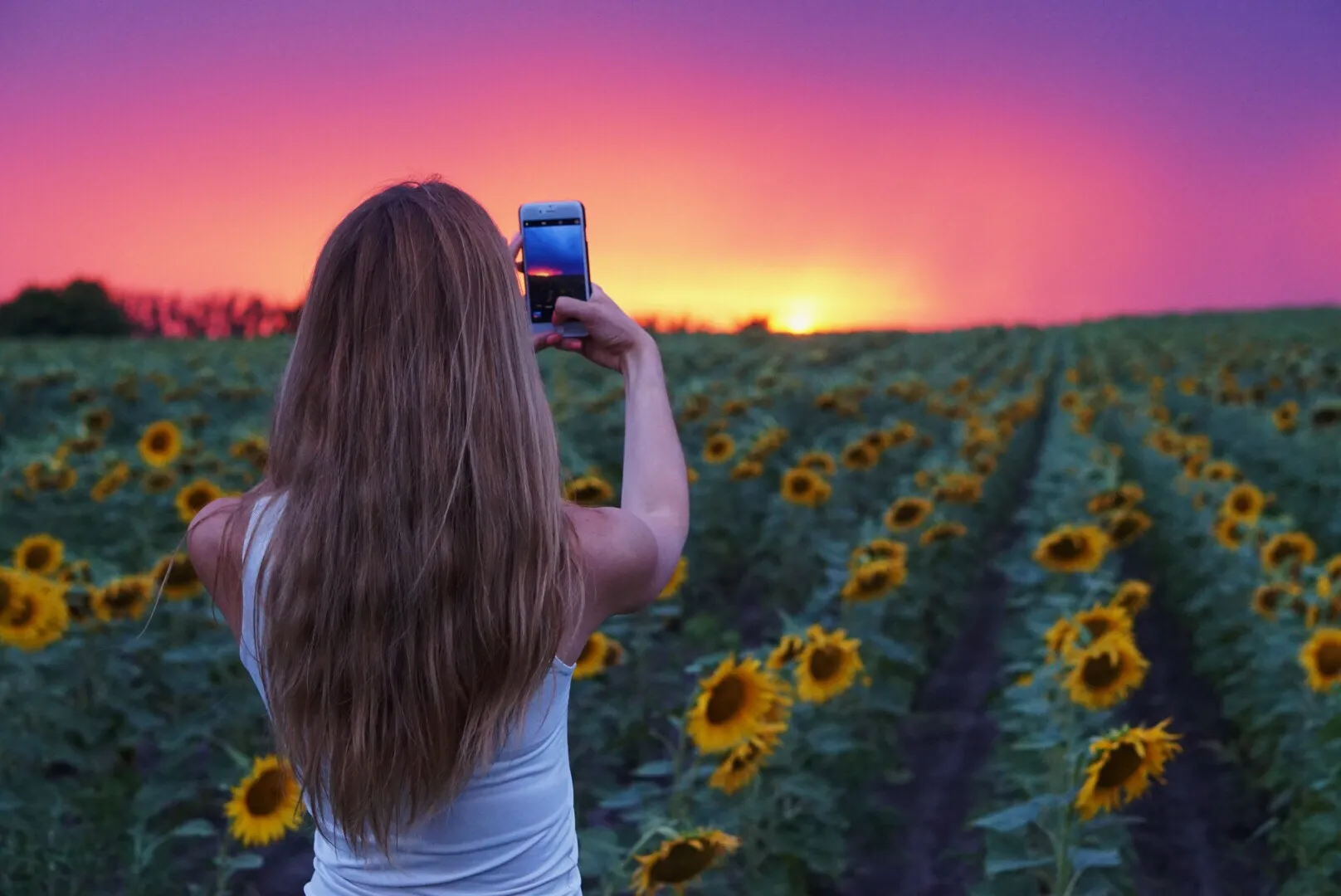
Pushing Boundaries in Mobile Photography
- Create Stories with a Photo Series
A photo series tells a story by capturing multiple images that are thematically or narratively connected. Focus on a subject, location, or event and shoot from different angles and perspectives to create a cohesive series. Arrange the photos in sequence to guide viewers through your visual story. - Capture Contrasts
Contrasts in texture, color, or scale can make a photo more visually compelling. For instance, juxtapose smooth and rough textures or warm and cool colors. Highlighting differences within a frame adds interest and makes your subject stand out. Contrasts can also be used to evoke emotions or tell a story. - Utilize Layer Masks in Editing
Advanced editing tools like layer masks allow you to selectively apply effects or adjustments to specific parts of a photo. For example, brighten your subject without overexposing the background. Apps like Lightroom or Photoshop offer these features, helping you fine-tune your photos with precision. - Shoot High-Key and Low-Key Portraits
High-key portraits use bright, even lighting to minimize shadows and create an airy feel, ideal for happy or vibrant themes. Low-key portraits, on the other hand, use shadows and dramatic lighting to create moody, intense visuals. Experiment with both styles to develop a diverse portfolio. - Capture Action with Panning Shots
Panning involves following a moving subject with your camera while using a slower shutter speed. This technique creates a sharp subject against a blurred background, emphasizing motion. Practice smooth movements and stabilize your phone to perfect this skill, especially in sports or wildlife photography. - Use Patterns for Repetition and Rhythm
Patterns, whether natural or man-made, create a sense of repetition and rhythm that draws the viewer’s eye. Look for tiles, rows of trees, or repeated architectural elements to capture engaging compositions. Break the pattern with a contrasting subject for added visual intrigue. - Explore Double Exposure Photography
Double exposure combines two images into one, resulting in surreal or artistic effects. Many apps allow you to overlay one photo onto another, blending them creatively. For instance, merge a portrait with a landscape for a dreamy result. Experiment with opacity and layering to create striking visuals. - Focus on Silky Light Trails
Light trails from vehicles or moving objects can add a dynamic element to night photography. Use a tripod and long exposure to capture streaks of light while keeping stationary elements sharp. Experiment with traffic patterns, fairground rides, or cityscapes for stunning effects. - Master Shadows and Highlights
Shadows and highlights shape the mood and tone of your photo. Subtle adjustments in editing can emphasize depth or reveal hidden details. Be careful not to over-edit, as this can make the photo look unnatural. Learning how to balance these elements enhances your overall composition. - Try Monochromatic Color Schemes
Monochromatic photos use varying shades of a single colour to create harmony and focus. For example, a photo dominated by shades of blue can feel calm, while red tones evoke energy. Use editing tools to fine-tune hues and saturation, ensuring a cohesive look.

Mastering the Final Techniques
- Explore Cinematic Photography
Cinematic photography uses techniques like widescreen cropping, dramatic lighting, and intentional color grading to create images that look like movie stills. Pay attention to storytelling elements, such as the use of shadows, leading lines, and emotional expressions. Apps like Lightroom or VSCO offer presets to help achieve this aesthetic. - Capture Unique Perspectives with Refractions
Refraction photography bends light through objects like prisms, water droplets, or crystal spheres. Hold a prism in front of your phone’s lens or use a glass of water to distort and manipulate the scene. Experiment with angles and light sources to create surreal and abstract compositions. - Shoot Long Exposures for Star Trails
Capturing star trails requires clear skies, minimal light pollution, and a tripod for stability. Use long exposure settings to record the movement of stars across the sky, resulting in mesmerizing streaks of light. Many smartphones support astrophotography modes that simplify the process. - Emphasize Symmetry and Reflection in Water
Use still water, like ponds or puddles, to create symmetrical compositions that reflect your subject. Frame the reflection to take up half the image, balancing it with the real subject. Reflections add harmony and create visually striking images with a touch of artistic flair. - Try Color Splash Editing
Colour splash highlights one colour in an otherwise black-and-white image, drawing focus to the subject. For example, isolate the red of a rose against a grayscale background. Apps like Snapseed or Lightroom allow you to create this effect, adding drama and focus to your photos. - Explore Split-Tone Editing
Split-toning adds different hues to the shadows and highlights of your photos. This technique can create unique atmospheres, such as adding warm tones to highlights and cooler tones to shadows for a cinematic effect. Experimenting with split tones helps you develop your editing style. - Play with Reflections in Portraits
Use mirrors, reflective sunglasses, or shiny surfaces to add layers and creativity to portrait photography. For instance, shooting a subject through a reflective surface creates visual intrigue and depth. Adjust angles to balance the reflection and subject seamlessly in the frame. - Create Abstracts with Motion Blur
Intentional motion blur can transform mundane scenes into artistic expressions. Move your camera while shooting or photograph moving subjects to create streaks of color or patterns. Combine motion blur with vibrant backgrounds for abstract and energetic compositions. - Focus on Contrast in Black-and-White Shots
Black-and-white photos rely heavily on contrast for impact. Look for high-contrast scenes with strong shadows, bright highlights, and defined textures. Adjust brightness and contrast during editing to emphasize the dramatic interplay of light and dark. - Tell a Story with Layers of Foreground, Middle Ground, and Background
Including multiple layers in your photo adds depth and dimension, making the viewer feel immersed in the scene. For instance, frame a mountain landscape with flowers in the foreground and trees in the midground. Thoughtful layering creates a balanced composition and visual interest. - Experiment with Photo Collages
Combine multiple images into a single frame to tell a story or highlight different perspectives of the same subject. Use apps like Canva or Adobe Express to create visually cohesive collages. Vary the size and placement of each photo to maintain balance and harmony.
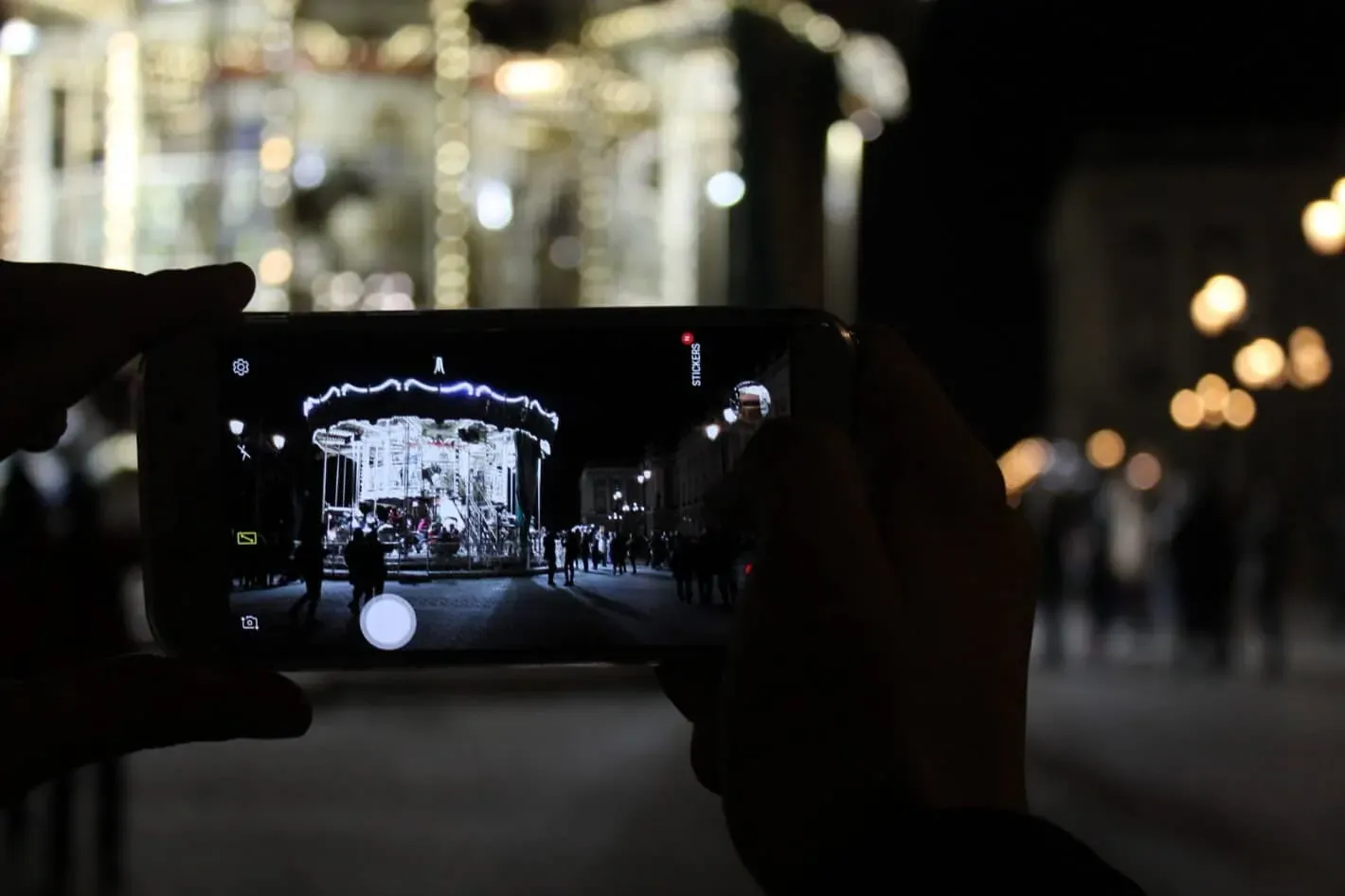
Unlocking the Full Potential of Mobile Photography
- Create Depth with Fog or Smoke
Atmospheric elements like fog or smoke add mystery and mood to your photos. Use natural fog during early mornings or simulate it with artificial smoke for dramatic effects. Position your subject so that light interacts with the fog, creating ethereal beams or diffused highlights. - Work with Hard and Soft Light
Understanding the difference between hard and soft light can transform your photography. Hard light, with sharp shadows, is great for dramatic or edgy compositions. Soft light, with diffused shadows, works well for portraits or gentle scenes. Experimenting with these lighting styles allows you to adapt to various moods and themes. - Photograph Reflections in Unusual Objects
Go beyond standard reflective surfaces like water and glass by using unconventional objects like spoons, metallic surfaces, or even shiny plastic. Position your subject creatively to fit within the reflection, creating a unique twist on conventional photography techniques. - Focus on the Golden Ratio for Composition
The golden ratio is a mathematical composition rule that creates visually pleasing arrangements. Use apps or guides to position your subject along the spiral or grid for naturally balanced photos. This technique enhances the aesthetic appeal of your images, particularly in nature and architecture photography. - Explore Overlays and Double Frames
Combine multiple frames or overlays to create unique effects. For example, shoot through a window with raindrops, overlaying them on your subject, or layer images during editing. This technique adds complexity and intrigue, making your photos more artistic and memorable. - Use Color Contrast to Highlight Subjects
Strong color contrasts, such as pairing blue and orange or red and green, can draw attention to your subject. Position contrasting colors strategically within the frame to create bold, eye-catching visuals. Color contrast is particularly effective in street photography and abstract compositions. - Shoot Architecture with Dramatic Angles
Emphasize the scale and geometry of buildings by shooting from unique perspectives. Capture towering skyscrapers from a low angle or focus on intricate details like textures and patterns. Pay attention to symmetry and leading lines to highlight the design of the structure. - Capture Seasonal Changes
Photograph the beauty of changing seasons, like blooming flowers in spring, vibrant leaves in autumn, snowy landscapes in winter, or sunny beaches in summer. Use lighting and color to emphasize the atmosphere of the season. Seasonal themes add variety and context to your photography. - Invest in Mobile Photography Accessories
Accessories like external flashes, clip-on filters, gimbals, and portable tripods can dramatically improve your results. For instance, a ring light enhances portrait photography, while a polarizing filter reduces glare and improves colour saturation. High-quality accessories expand your creative possibilities.
Mobile photography is more than just a way to document moments—it’s a versatile art form that encourages creativity, storytelling, and personal expression. With advancements in smartphone technology, anyone can produce visually stunning images that rival those taken with professional equipment. However, the true magic lies not in the device but in how you wield it.
Throughout this guide, we’ve explored over 100 tips to improve your mobile photography, covering everything from mastering basic settings to experimenting with advanced techniques like long exposures, forced perspectives, and creative editing. Whether you’re perfecting your composition, playing with light and shadows, or finding new ways to tell a story, these tips offer endless possibilities to refine your craft.
As you practice and explore, remember that photography is as much about your unique perspective as it is about technical skill. Don’t be afraid to experiment, make mistakes, and push the boundaries of what’s possible with your smartphone. The more you challenge yourself, the more your creativity and confidence will grow

